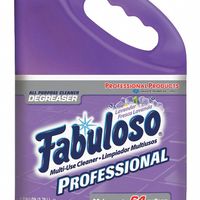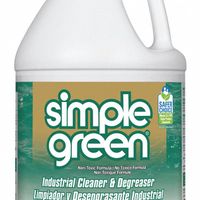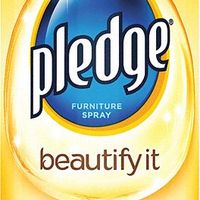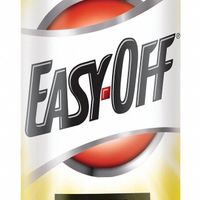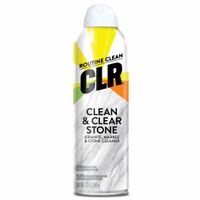Call +(254) 703 030 000 / 751 483 999 / 721 704 777
- Home
- Cleaning And Janitorial
- Cleaning Chemicals
- Cleaners Degreasers
.....Read More
Frequently Asked Questions
What is the best all-purpose cleaner for multiple surfaces?
The best all-purpose cleaner for multiple surfaces is often considered to be Mrs. Meyer's Clean Day Multi-Surface Everyday Cleaner. This cleaner is renowned for its versatility, effectiveness, and eco-friendly formulation. It is designed to tackle dirt and grime on a variety of surfaces, including countertops, floors, walls, and more, making it a convenient choice for households looking to simplify their cleaning routine.
Mrs. Meyer's Clean Day is made with plant-derived ingredients and essential oils, which not only provide a powerful clean but also leave a pleasant, natural scent. It is free from harsh chemicals like ammonia, chlorine, and phosphates, making it a safer option for homes with children and pets. The cleaner is biodegradable and packaged in recyclable materials, aligning with environmentally conscious practices.
The product is available in a range of scents, such as lavender, lemon verbena, and basil, allowing users to choose a fragrance that suits their preference. Its spray bottle design ensures easy application, and it can be used directly on surfaces or diluted in water for larger cleaning tasks.
While Mrs. Meyer's Clean Day is highly effective on most surfaces, it is always recommended to test it on a small, inconspicuous area first, especially on delicate surfaces like natural stone or untreated wood. This ensures compatibility and prevents any potential damage.
Overall, Mrs. Meyer's Clean Day Multi-Surface Everyday Cleaner is a top choice for those seeking an all-purpose cleaner that combines cleaning power with environmental responsibility and pleasant scents.
How do degreasers work on tough grease and oil stains?
Degreasers work on tough grease and oil stains through a combination of chemical reactions and physical processes that break down and remove these substances. Grease and oil are hydrophobic, meaning they repel water, which makes them difficult to clean with water alone. Degreasers contain specific ingredients that target these properties.
1. **Surfactants**: These are compounds that lower the surface tension between two substances, such as a liquid and a solid. Surfactants in degreasers have both hydrophilic (water-attracting) and lipophilic (oil-attracting) ends. The lipophilic end binds to the grease or oil, while the hydrophilic end binds to water, allowing the grease to be emulsified and washed away.
2. **Solvents**: Many degreasers contain solvents that dissolve grease and oil. These solvents can be organic, like mineral spirits, or water-based. They work by breaking down the molecular structure of the grease, making it easier to remove.
3. **Alkaline Agents**: Degreasers often include alkaline substances, such as sodium hydroxide or potassium hydroxide, which saponify fats and oils. This chemical reaction converts the grease into soap and glycerol, both of which are more soluble in water and easier to rinse away.
4. **Emulsifiers**: These agents help to stabilize the mixture of oil and water, preventing the grease from re-depositing on surfaces. They keep the oil droplets suspended in the cleaning solution until they can be rinsed off.
5. **Mechanical Action**: The application of physical force, such as scrubbing, enhances the effectiveness of degreasers by helping to dislodge and lift grease from surfaces.
Together, these components enable degreasers to effectively tackle tough grease and oil stains, making them essential in both industrial and household cleaning applications.
What is the safest way to clean electrical contacts?
To clean electrical contacts safely, first ensure the device is powered off and unplugged to prevent electric shock. Wear protective gloves and eyewear for safety. Use a can of compressed air to blow away loose dust and debris from the contacts. For more stubborn dirt, use a soft, lint-free cloth or a cotton swab lightly dampened with isopropyl alcohol (at least 90% concentration) to gently wipe the contacts. Avoid soaking the cloth or swab to prevent excess liquid from seeping into the device.
For heavily corroded contacts, a contact cleaner spray specifically designed for electronics can be used. Spray the cleaner onto the contacts and allow it to evaporate. If necessary, gently scrub with a soft brush or a pencil eraser to remove corrosion. Be cautious not to apply too much pressure, which could damage the contacts.
After cleaning, allow the contacts to dry completely before reassembling the device or reconnecting power. This ensures no residual moisture can cause short circuits. Regular maintenance and cleaning can prevent oxidation and ensure optimal performance of electrical contacts.
How can I effectively remove soap scum and mold from bathroom surfaces?
To effectively remove soap scum and mold from bathroom surfaces, follow these steps:
1. **Gather Supplies**: You'll need white vinegar, baking soda, a spray bottle, a scrub brush or sponge, a microfiber cloth, and a mold-specific cleaner if necessary.
2. **Ventilation**: Ensure the bathroom is well-ventilated by opening windows or turning on the exhaust fan to prevent inhaling fumes.
3. **Vinegar Solution**: Fill a spray bottle with equal parts white vinegar and water. Vinegar is acidic and helps dissolve soap scum.
4. **Apply Vinegar**: Spray the vinegar solution generously on surfaces with soap scum. Let it sit for 15-20 minutes to break down the buildup.
5. **Scrub**: Use a scrub brush or sponge to scrub the surfaces. For tough spots, sprinkle baking soda on the sponge before scrubbing. The mild abrasiveness of baking soda helps remove stubborn scum.
6. **Rinse**: Rinse the surfaces thoroughly with warm water to remove any residue.
7. **Mold Removal**: For mold, use a mold-specific cleaner or a mixture of one part bleach to ten parts water. Apply it to the affected areas and let it sit for 10-15 minutes.
8. **Scrub Mold**: Use a scrub brush to remove mold. Be sure to wear gloves and a mask to protect yourself from mold spores and bleach fumes.
9. **Rinse and Dry**: Rinse the area with water and dry it with a microfiber cloth to prevent future mold growth.
10. **Prevention**: To prevent soap scum and mold, regularly clean surfaces, use a squeegee after showers, and keep the bathroom well-ventilated.
By following these steps, you can effectively remove soap scum and mold, keeping your bathroom clean and hygienic.
What is the best method to clean glass without leaving streaks?
The best method to clean glass without leaving streaks involves using the right tools and techniques. Start by gathering a microfiber cloth, a squeegee, and a high-quality glass cleaner or a homemade solution of equal parts distilled water and white vinegar. Avoid using paper towels or newspapers, as they can leave lint or ink residue.
Begin by dusting the glass surface with a dry microfiber cloth to remove loose dirt and debris. This prevents scratching during the cleaning process. Next, spray the glass cleaner or vinegar solution onto the surface. If you're using a homemade solution, ensure it's mixed well in a spray bottle for even application.
Use a microfiber cloth to gently wipe the glass in a circular motion, covering the entire surface. This helps to break down and lift any grease or grime. For larger windows or mirrors, a squeegee is highly effective. Start at the top corner and pull the squeegee down in a straight line, wiping the blade with a clean cloth after each pass to prevent streaks.
For stubborn spots or residue, apply a bit more solution and let it sit for a few seconds before wiping. Pay attention to the edges and corners, as these areas often accumulate more dirt.
Finish by buffing the glass with a dry microfiber cloth using a horizontal or vertical motion to ensure a streak-free shine. If any streaks remain, they are usually due to leftover cleaner, so a final pass with a dry cloth should resolve this.
By using the right materials and techniques, you can achieve a clear, streak-free finish on your glass surfaces.
How do I clean and maintain my grill and oven effectively?
To clean and maintain your grill and oven effectively, follow these steps:
1. **Grill Cleaning:**
- **Pre-Cleaning:** Turn on the grill to high heat for 15 minutes to burn off residue. Let it cool slightly.
- **Grates:** Use a wire brush to scrub the grates. For stubborn residue, soak grates in warm, soapy water and scrub again.
- **Burners:** Remove and clean burners with a brush. Check for blockages in burner holes.
- **Interior:** Scrape off debris from the interior with a putty knife. Wipe with a damp cloth.
- **Exterior:** Clean with a non-abrasive cleaner and a soft cloth. For stainless steel, use a stainless steel cleaner.
- **Regular Maintenance:** After each use, brush grates and empty the grease tray.
2. **Oven Cleaning:**
- **Self-Cleaning Feature:** If available, use the self-cleaning function. Remove racks and follow the manufacturer's instructions.
- **Manual Cleaning:**
- **Racks:** Soak in warm, soapy water. Scrub with a non-abrasive pad.
- **Interior:** Make a paste of baking soda and water. Apply to interior surfaces, avoiding heating elements. Let sit overnight, then wipe with a damp cloth.
- **Stubborn Stains:** Use a vinegar spray to help remove baking soda residue and tough stains.
- **Glass Door:** Use a mixture of baking soda and water or a commercial glass cleaner. Wipe with a soft cloth.
- **Regular Maintenance:** Wipe spills immediately and clean monthly to prevent buildup.
3. **Safety Tips:**
- Always ensure appliances are off and cool before cleaning.
- Wear gloves to protect your hands.
- Follow manufacturer guidelines for specific cleaning instructions.
Regular cleaning and maintenance will extend the life of your grill and oven, ensuring they function efficiently.
What products are recommended for polishing and protecting wood and metal surfaces?
For polishing and protecting wood surfaces, consider using the following products:
1. **Beeswax Polish**: Provides a natural finish and enhances the wood grain while offering protection against moisture. It's ideal for antique furniture.
2. **Carnauba Wax**: Known for its durability and high-gloss finish, carnauba wax is suitable for both wood and metal surfaces. It offers a hard protective layer.
3. **Tung Oil**: Penetrates deeply into the wood, providing a durable, water-resistant finish. It enhances the natural color and grain of the wood.
4. **Danish Oil**: A blend of oil and varnish that penetrates the wood and provides a hard, durable finish. It’s easy to apply and maintain.
5. **Lemon Oil**: Conditions and cleans wood surfaces, leaving a fresh scent. It’s best for regular maintenance rather than heavy-duty protection.
For metal surfaces, consider these products:
1. **Metal Polish Creams**: Products like Brasso or Flitz are effective for removing tarnish and oxidation from metals like brass, copper, and stainless steel.
2. **WD-40**: While primarily a lubricant, WD-40 can also clean and protect metal surfaces from rust and corrosion.
3. **Renaissance Wax**: A micro-crystalline wax polish that provides a protective coating for both wood and metal. It’s used by museums for its non-acidic, non-abrasive properties.
4. **Stainless Steel Cleaner**: Specialized cleaners that remove fingerprints and smudges while leaving a protective layer to prevent future marks.
5. **Aluminum Polish**: Products like Mothers Mag & Aluminum Polish are designed to restore shine and protect aluminum surfaces.
These products help maintain the aesthetic and structural integrity of wood and metal surfaces, ensuring longevity and enhanced appearance.
